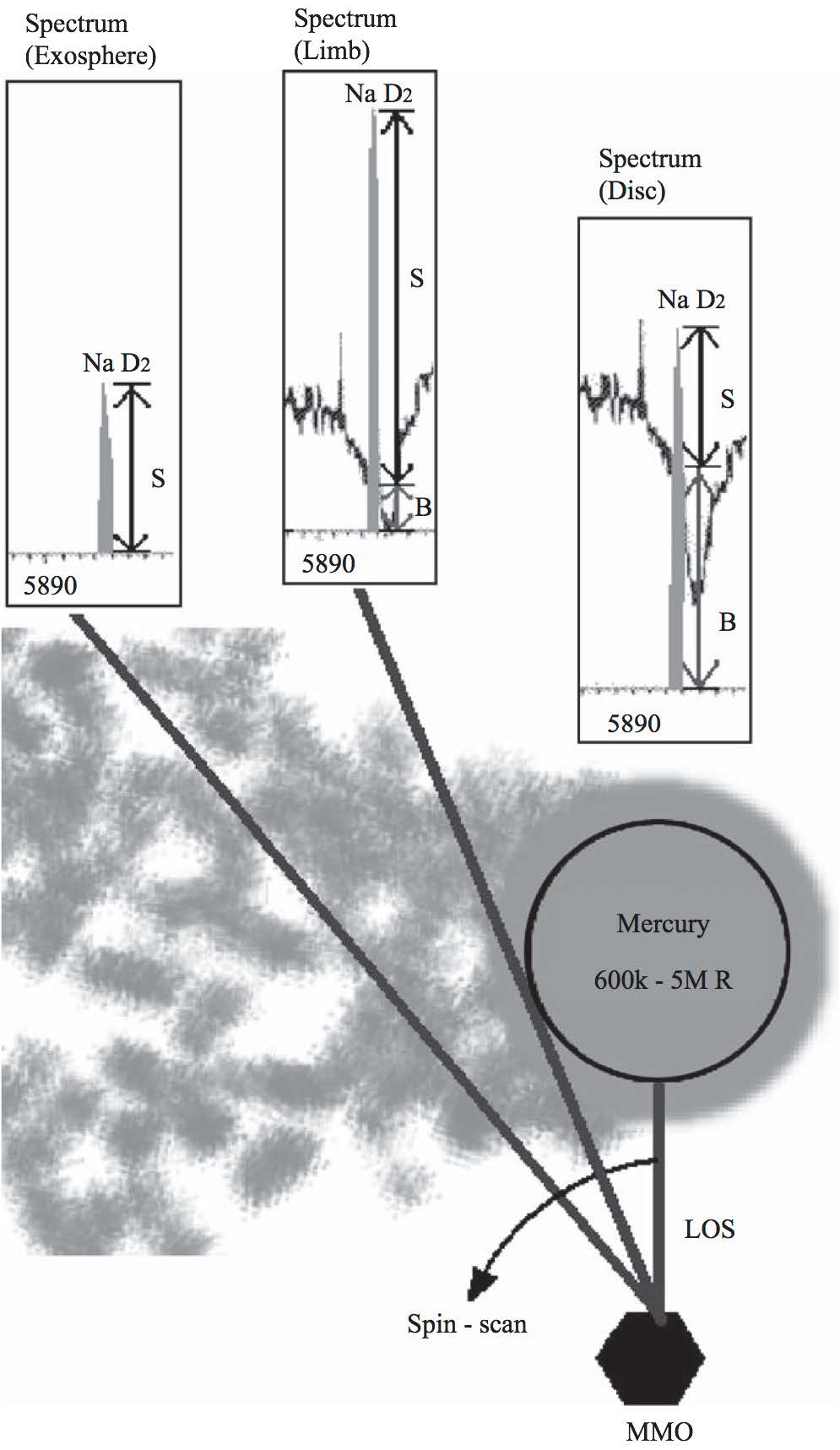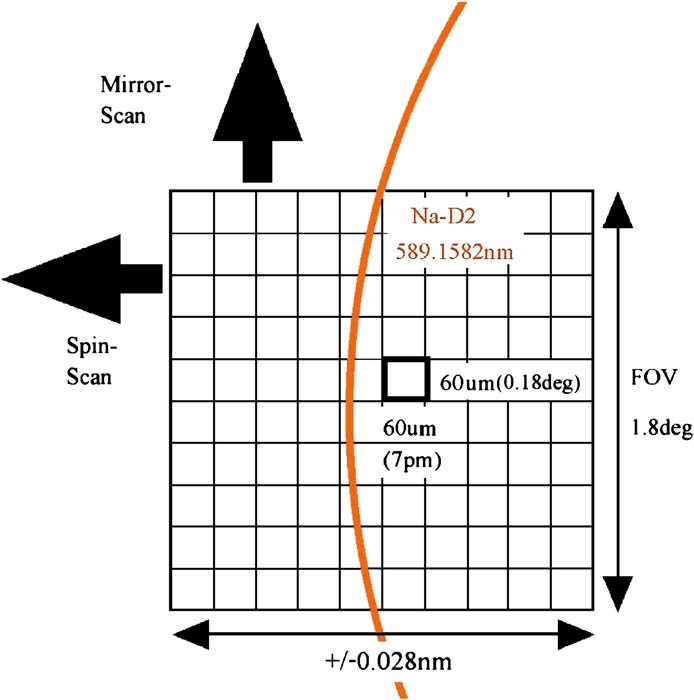MSASI - BepiColombo
msasi
mercury sodium atmosphere spectral imager
Pronounced ‘musashi', MSASI (Mercury Sodium Atmospheric Spectral Imager) is a spectrometer devoted to the measurement of a narrow sodium D2 emission line (589nm ± 0.028nm) against the bright surface of Mercury. A single high-resolution Fabry–Perot etalon is used in combination with an ultra-narrow band-pass filter. Full-disk images of the planet are obtained by means of a single-axis scanning mirror in combination with the spin.
Science goals
- dominant release process for sodium
- dusk-dawn asymmetry
- sodium tail
- topographic effect;
these are explained in further detail below.
Source processes considered likely are thermal desorption, photon-stimulated desorption, sputtering by impacting particles in the solar wind, and meteoroid vaporisation. The target of the MSASI instrument is to observe the north–south distribution and to measure the temporal variations of the release rate of sodium atoms. Through these capabilities, it will be possible to investigate the likely source processes.
Some researchers have seen significant spatial asymmetries: the average column density of sodium atoms in the morning region is larger than that in the afternoon by a factor of 3. Sodium atoms are implanted on Mercury's cold surface during the night. However, other workers have not observed this morning/afternoon asymmetry; this has not yet been resolved.
Neutral particles in the exosphere move primarily in ballistic orbits under gravity, but their individual paths are influenced by the solar radiation pressure, which pushes them in the anti-sunward direction. The varying Sun–Mercury radial velocity of Mercury in its orbit causes a variable Doppler shift comparable to the line-width of the sodium D2 absorption line in the solar spectrum. In combination with the varying Sun–Mercury distance, the solar radiation pressure' (x1) and TAA with 'Mercury true anomaly' (x2) effect thus changes by a factor of more than 10 for a sodium atom in Mercury's atmosphere. Near TAA = 64º and 300º (maximum solar radiation pressure, around perihelion), sodium atoms stream anti-sunward from the planet and form a long comet-like tail. On the other hand, near TAA = 180º, under low solar radiation pressure conditions, the shape of the sodium exosphere is essentially the same as it would be for zero solar radiation pressure, producing a spherically symmetric sodium exosphere.

Enhancements have been found at particular locations on the surface. the spatial resolution of MSASI varies between 5km (periapsis) and 40km (apoapsis), which is anticipated to enable a clear differentiation between the effects of particle sputtering and a possible topographic effect.
Measurement principle
A Fabry-Perot interferometer produces a circular fringe pattern on its focal plane. A part of this circular fringe (a circular arc oriented along the spin axis direction of the spacecraft) is used as a 1D image. Each 2ms, the instantaneous field of view shifts by 0.18º along the spin-scan direction. Hence, using a one degree-of freedom scanning mirror (15 mm x 25 mm) to alter the line-of-sight from 25º to 55º, plus the spin of the spacecraft, it can obtain full-disk images of the planet and the sodium tail. The radiation-tolerant CMOS device with an image intensifier is used as a photon detector.

- Removed a total of (4) style text-align:center;
- Removed a total of (3) style text-align:left;








































 Sign in
Sign in
 Science & Technology
Science & Technology

